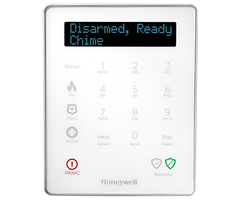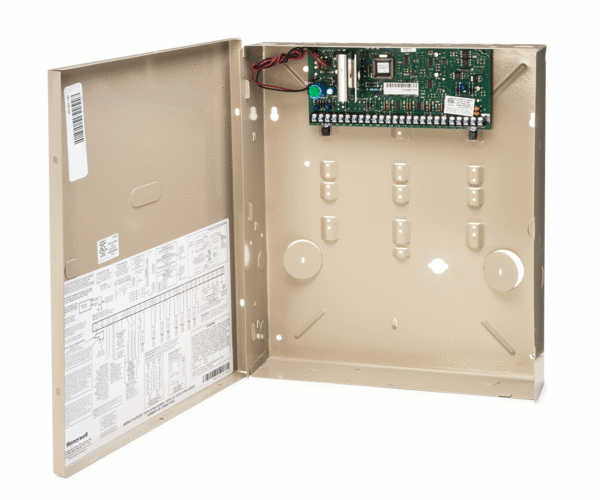Resideo Reports Compatibility Issues Between Some 6160RF Keypads and 5800WAVE and/or 5800RL
Posted By Julia RossToday, Resideo and Honeywell Home released Technical Notification #63. This bulletin describes a compatibility issue between some 6160RF keypads and the 5800WAVE and/or 5800RL. Keypad Date Codes D147 - E049 may be affected. Customers with the issue can return the keypad for a replacement.
The 6160RF is one of our most recommended products for those using a VISTA system. It solves two potential problems by providing both a programming (Alpha-Numeric) keypad, and a high-capacity transceiver. High-capacity means that as a receiver it can support as many wireless zones as the panel allows. Depending on the panel, this equates to as many as 249 wireless zones. As a transceiver, it can support all bi-directional 5800 Series devices. It does this using a House ID protocol in most instances.
The Honeywell 5800RL and the Honeywell 5800WAVE are two devices that receive status information from the panel through a transceiver using a House ID. The 5800RL is a wireless relay module with two relays. Relay A activates following the siren output of the panel. Any activity that causes the siren to sound will also cause the relay to activate. When the siren stops sounding, either because bell timeout has been reached, or because someone has disarmed, the relay goes back to its OFF position. The 5800RL is customarily used to add a high-current siren in a location where it is impossible to wire from the desired location all the way back to the panel. Relay B on the 5800RL follows the panel's arming state. This can be used to externally show the panel's armed status using an LED.
The 5800WAVE is a wireless siren. It also follows the panel's siren output. It provides an 85 dB alarm sounder in a location where a wired siren cannot be installed for any reason. It plugs into an AC outlet, and has its own battery for backup power. The problem described in the bulletin exists with only certain 6160RF keypads. These keypads fall within a particular date code range, and have a specific firmware version.
For the affected 6160RF keypads when used with the wireless siren or relay, the 5800RL Armed Status Relay (Relay B) may not provide the proper status. It may show Armed when the system is actually Disarmed, or vice versa. The 5800WAVE siren may also behave improperly, with the siren either continuing to sound when it should shut off or not sounding when it should. Remember, the issue is not with the 5800RL or the 5800WAVE, but with the 6160RF keypad.
To determine if you have a 6160RF keypad that is affected by this issue you need to check two (2) things. The date code of the 6160RF, and its firmware version. To check the date code you must open the keypad. Press in the two (2) locking tabs on the bottom edge of the keypad, then pull the front toward you. The Date Code should be either printed on the circuit board in black ink, or may be on a small white sticker on the board. It will be a letter followed by a 3-digit number. With the letter indicating the year of manufacture, and the number indicating the day of that year. The Date Codes to look for are: D147 - E049. This equates to May 26, 2020 through February 18, 2021. This is a date code range, so if your date code shows D226, then it is within the range. If it shows E037, it is within the range. If it shows D025 or E059, that is not within the affected range.
If you are using a 5800RL and/or a 5800WAVE with a 6160RF, and you are having issues like those described above, and you confirm that you have a keypad within the affected date code range, then you need to confirm the firmware version. Only keypads that fit the date code criteria and have Firmware Version 1.06 are affected by this particular issue. If you are having issues but with different products or with the same products within a different date code range, then you should troubleshoot with your alarm dealer or with Resideo technical support as a separate, unique issue.
However, if you need to confirm the firmware version of your 6160RF keypad, power down and back up. You can either power down the entire system (preferred), or just the keypad. In order to power down the keypad, you would need to remove the power wires at the keypad. To remove the wires at the keypad, you must remove the front as described above. Once the keypad has been taken apart, unscrew the red wire and remove it from the terminal. It is very important that the only thing this wire touches is the terminal you remove it from. Touching anything else with this wire could cause damage as it is a "live" wire. If you choose to power down the entire panel, you may need one person to perform the power cycle while the other person watches the 6160RF, depending on how far the keypad is from the transformer. Upon powering up, the keypad will display its version information. If it displays KeyPad Ver. 1.06, and all the other criteria above have also been met, then the keypad should be replaced.

If any of the criteria mentioned above are not met, if you aren't using a 5800WAVE and/or 5800RL, for example. If your keypad doesn't fall within the date code range, or if it does fall within the date code range, but the keypad firmware version is NOT version 1.06, then you do not need to replace the 6160RF. Only 6160RF devices that meet all of the above criteria should be replaced. In all other ways, the 6160RF keypad should behave as expected. If you would like to read the full Technical Notification, click here.
If you purchased a 6160RF from Alarm Grid and you are affected by this compatibility issue, please reach out to us by emailing support@alarmgrid.com. We will be happy to arrange a warranty replacement of your product once we confirm that the criteria are met. Remember that our support hours are Monday - Friday from 9 am - 8 pm Eastern Time.


 With these great features, every Honeywell VISTA System should really have at least one keypad from the Honeywell 6160-series. For the
With these great features, every Honeywell VISTA System should really have at least one keypad from the Honeywell 6160-series. For the 



